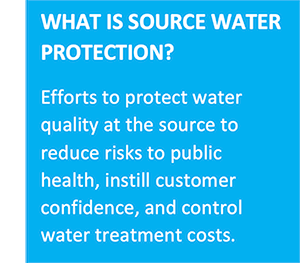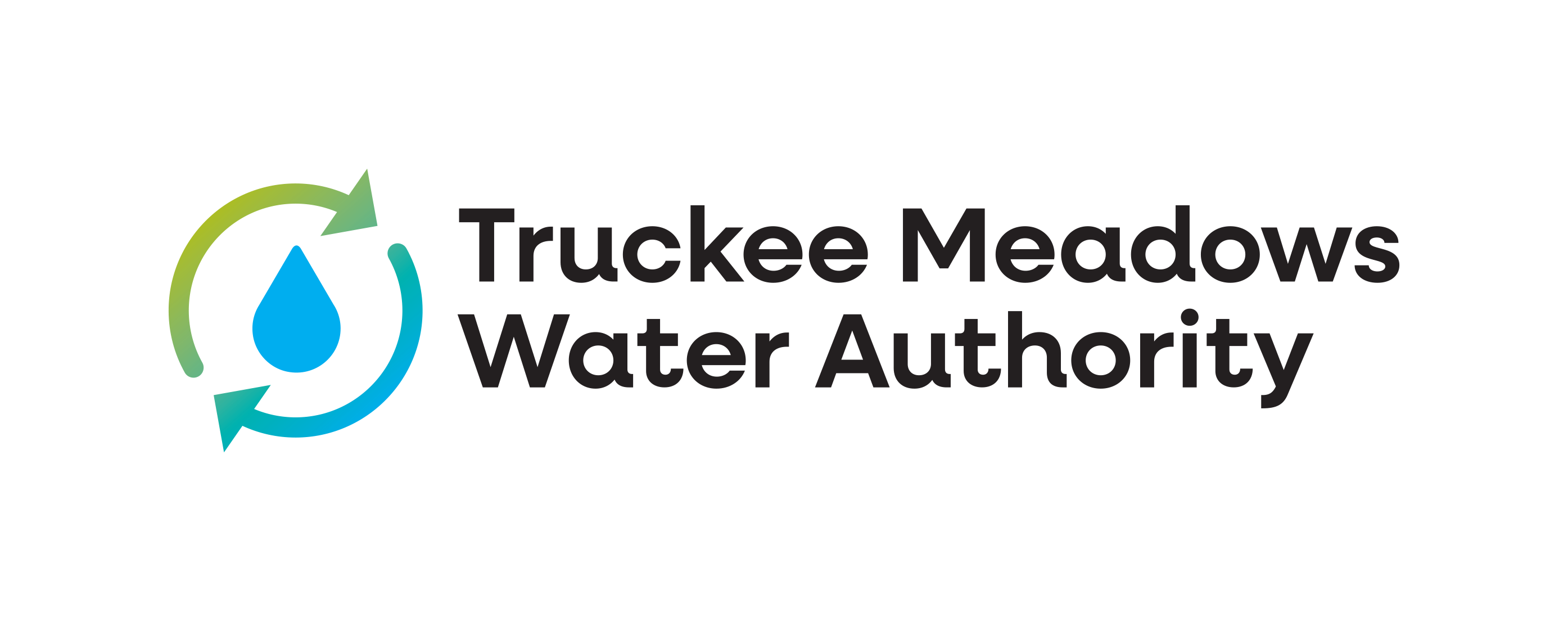Source Water Protection
 TMWA has a robust Source Water Protection Program to improve and maintain regional drinking-water quality. The sections below describe elements from the key components of TMWA’s program for 2023.
TMWA has a robust Source Water Protection Program to improve and maintain regional drinking-water quality. The sections below describe elements from the key components of TMWA’s program for 2023.
Integrated Source Water Protection Plan
A component of TMWA’s Source Water Protection Program is the 2020 Integrated Source Water and 319(h) Watershed Protection Plan for Public Water Systems and the Truckee River in the Truckee Meadows (2020 Plan). The 2020 Plan revolves around an online tool developed by the community to identify and map source water protection areas. This mapping facilitates project identification and implementation to preserve and improve the quality of the groundwater, lakes, rivers, springs, and streams that supply drinking water to the public. The website is regularly updated, at least on an annual basis, to include new source water protection areas and new projects.
Click to See our 2024 Source Water Protection Goals!
Source Water Protection Programs
Truckee River Fund
The Truckee River Fund was established by TMWA in 2004 and was one of the first components of TMWA’s source water protection efforts. This fund is used to support projects that protect and enhance the water quality or resources of the Truckee River and its watershed. Since 2004, the Truckee River Fund has funded 212 projects and distributed $16.1 million to qualifying projects through grant awards. Partner organizations have provided $26.1 million in cash and in-kind services. In 2023, Truckee River Fund provided grant funding to the projects listed in the table below.
| ORGANIZATION | PROJECT NAME |
|---|---|
| Great Basin Outdoor School | Youth Watershed & Protection Projects |
| Sierra Nevada Journeys | Watershed Education Initiative |
| Truckee River Watershed Council | Coldstream Canyon & Cold Creek Streambank Stabilization |
| Indigenous Peoples Council on Biocolonialism for Healing Waters Institute | River Justice |
| Friends of Nevada Wilderness | Mount Rose Noxious Weed Monitoring, Treatment, and Re-Seeding |
| US Fish and Wildlife Service | Truckee River Water Temperature Monitoring |
| City of Reno | Lake Park Floating Wetlands and Pollinator Revegetation Project |
| Keep Truckee Meadows Beautiful | 2024 Great Community Clean-Up, Truckee River Clean-Up, Adopt-A-River Program, and Community Education Program |
| One Truckee River | Watershed Coalition Building |
Middle Truckee River Watershed Forest Partnership
In October 2022, TMWA signed a memorandum of understanding with the Tahoe National Forest, The Nature Conservancy, Truckee River Watershed Council, and National Forest Foundation (NFF) to form the Middle Truckee River Watershed Forest Partnership (MTRWFP). A catastrophic fire in this area of the watershed could have direct and prolonged water quality impacts to TMWA’s sources of supply.
Since 2023, the partners have been working on planning and implementation and developed a 10-year vegetation plan. The goal is to treat 62,000 acres of forested lands by 2033 with ecologically-based forest thinning and restoration methods. For more information on specific projects, an interactive map is available on the MTRWFP website. The Partnership has raised $10.1 million from various grants since 2022 to fund planning and implementation for additional projects.
The Ladybug Project, partially funded through TMWA at $500,000, is underway. NFF is implementing the project. In 2023, NFF accomplished 465 acres of hazardous fuel reduction work within the Ladybug project area. This included 203 acres of large-diameter mastication (grinding) where trees up to 16” in diameter at breast height were masticated to meet spacing targets.

One Truckee River Partnership Council
TMWA is an active partner in the One Truckee River Partnership Council and a key implementation partner in the Truckee River Restroom Project. In 2020, the first Portland Loo was installed at Brodhead Park. In April 2023, the second Portland Loo was opened to the public at John Champion Park. These restrooms have been highly successful in reducing waste upstream of TMWA’s Glendale Water Treatment Plant intake and providing sanitation facilities for all river users.

NDEP Spill Reports
TMWA is notified by the Nevada Division of Environmental Protection (NDEP) when spills occur that could impact groundwater or surface water sources. TMWA closely monitors ongoing and active spill release sites overseen by NDEP and other local partners to prevent impacts to TMWA’s water supplies. TMWA reviewed 38 spill reports in 2023.

Development Project Application Reviews
TMWA is notified of projects that are being reviewed by Washoe County’s Planning and Building Division, City of Reno’s Planning Commission, and Sparks Planning & Community Services Department. In addition to other internal TMWA reviews, these projects are evaluated for source water protection concerns. If concerns are noted, comments are provided to the applicants via the agencies. TMWA assessed 50 development review memos for source water protection concerns in 2023.
In 2020, the City of Reno amended their Title 18 Land Development Code to add a process for new businesses to notify TMWA if they fall within designated SWPAs. TMWA is notified when new activities are planned within critical distances of sensitive water infrastructure. This provides the opportunity for TMWA staff to educate those businesses about the location of drinking water sources and the SWPP. This cooperative process provides businesses with the information needed to take the measures required to help prevent future groundwater and surface water contamination.
TMWA received notifications from 150 businesses in 2023, and TMWA contacted approximately 25% of those businesses (38 businesses). Businesses were contacted if they were located within a critical source water protection area and/or the business type was of particular concern for water quality. On the graph below, red indicates business types of the highest concern and yellow are of moderate concern. The attached maps show locations for projects submitted and contacted in 2023.
Donner Interagency Partnership for Stewardship
During 2020 and 2021, visitation to the Donner Lake area drastically increased. With growing numbers of visitors came additional issues such as higher boat traffic, increased erosion, and more litter. To address these issues, multiple stakeholders, including TMWA, came together to form the Donner Interagency Partnership for Stewardship (DIPS). In June 2023, the collaborative published the 2022 State of Donner Lake to create a baseline dataset about the ecological and water quality conditions of Donner Lake. DIPS has also created the 2022 Stewardship Plan to identify action items to protect the long-term health of Donner Lake.

Forest Ambassador Program
TMWA partnered with the Humboldt-Toiyabe National Forest and the National Forest Foundation in 2022 to establish a Forest Ambassador Program in the watersheds upstream of the Mt. Rose Water Treatment Plant. The Forest Ambassador spends time on the local trails educating recreators about responsible recreation and the importance of protecting the region’s water supply. In 2023, the Forest Ambassador interacted with nearly 4,000 people from June through November.

Forest Ambassador providing educational materials to trail users at the Thomas Creek trailhead.





